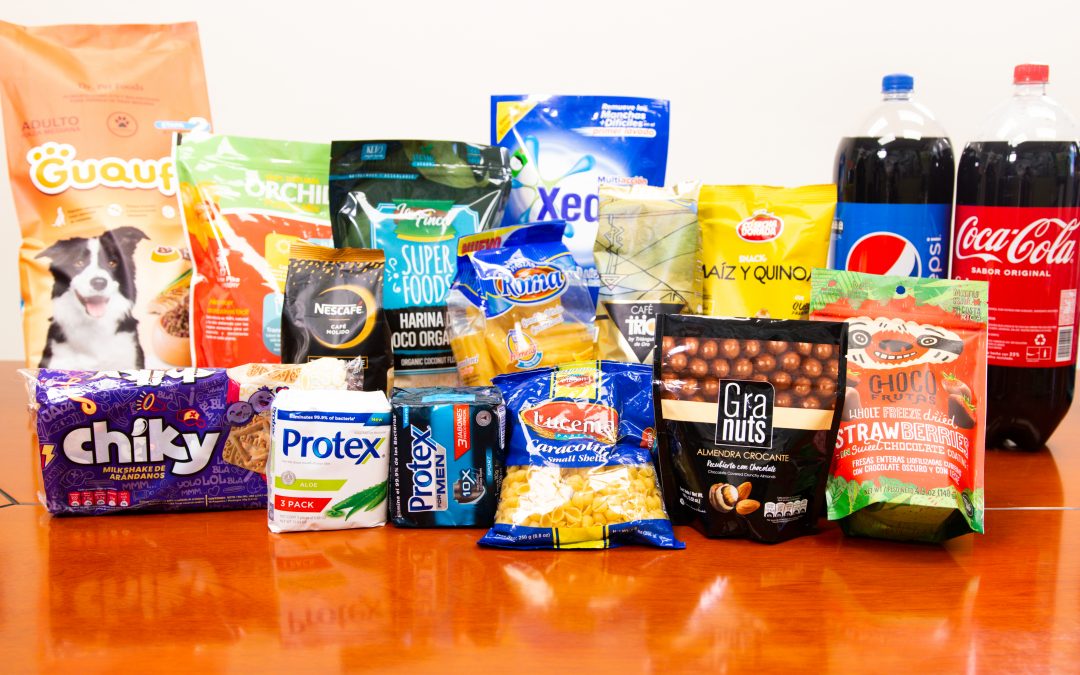Eco-friendly packaging, a necessary innovation

What is eco-friendly packaging? How can we reduce the environmental impact without putting our product and our consumer at risk? Do they increase the cost of products? These are some of the challenges that environmentally responsible companies face today. However, there is a lot of confusion with these topics. Here we leave you a practical guide to find that balance between packaging that protects your product, the environment, but also costs.
Environmental impact
Despite what many believe, plastic for packaging products is not the source of the pollution problem. It allows us to have at hand all the products we need for our daily lives. Protects them by extending their life cycle and avoiding waste. In addition, its impact on the carbon footprint is one of the lowest compared to other alternatives (glass, cardboard), because its manufacturing and recycling processes use less energy. The problem is the abusive use and poor disposal of plastic.
Consumers and companies increasingly seek to reduce their impact on the environment. To achieve this, there are several eco-friendly packaging strategies, each with its benefits and challenges. Each company must choose the best path according to its geography, final disposal options, marketing strategies and type of product. Below we leave you 5 options, not necessarily mutually exclusive.
1.- Reduce
It is the first approach we recommend as it achieves a better impact on both costs and the environment. There are many packaging applications where we achieve reduction opportunities, both in formats and material thicknesses. We must ensure that the packaging is not oversized for the product. Resinplast has specialized structures and technicians that can support this process. We have achieved eco-friendly packaging projects with impacts greater than 10% reduction, without compromising its functionality.
2.- Recycle
The next thing is to use packaging structures that are easily recyclable and/or purchase products that have recycled plastic content. In this way we can promote the circular economy of plastic, as has been properly applied in Pet bottles (soft drinks and water, for example).
3.- Raise awareness
We must ensure that we educate our consumers on the proper final disposal of their waste and eco-friendly packaging. Although plastic in our oceans is a situation that worries us all, the reality is that it gets there due to inadequate disposal of the waste. That is, we throw garbage where it shouldn't belong.
4.- Bio Plastics
Having gone through the three previous strategies, the next thing is to think about organic packaging. These reduce the use of fossil fuels and allow the environment to take care of its final disposal (conditions apply). However, the availability of these resins is limited and they regularly increase the costs of their packaging materials.
In bio plastics to generate eco-friendly packaging there are two general worlds:
- Bio-based Plastics: These are plastics whose resins are sourced from materials other than fossil fuels, such as cassava, sugar, or potatoes. The percentages and origins vary, so it is important to ensure they are certified.
- Compostable Plastics: These are divided into three main categories: industrial, home, and marine compostable plastics. Composting requires specific conditions of moisture and temperature. It is critical to consider that packaging designed for composting may not be compatible with traditional recycling systems in your locality. For example, in Central America and the Caribbean, there are currently limited composting capabilities.
-
- Industrial Compostables: These require special composting facilities to achieve degradation.
- Home Compostables: These can be composted at home, but creating awareness and culture among end customers can take time and investment in communication.
- Marine Compostables: Designed to degrade in the ocean. However, these materials are costly and present greater limitations when it comes to protecting products.
5.- Degradable Oxo plastics
They are made with molecules that break down over time, thus achieving their physical degradation into small particles. However, they have been of great debate since there are studies that suggest that these plastics, once degraded, begin a biological process. It remains in the environment and, therefore, in our food chains. What this option does achieve is mitigate visible contamination, since the residue turns into dust.
Packaging functionality
In essence, the purpose of packaging is to protect the product it contains and communicate with the consumer. In this sense, the design of eco-friendly packaging must protect the properties of its product, avoid reducing its useful life and be striking in its design. Food waste is one of the largest generators of greenhouse gases. Achieving shelf-life extension through improved barrier materials can also contribute to your company's environmental goals. In addition, it allows its customers to consume fresher foods with better organoleptic properties.
Impact on costs
Last but not least is the cost part. Fortunately, technology has advanced a lot in recent years, and we can have alternative materials at a more affordable cost. Before they were simply unviable. But not all companies can incorporate these costs without putting the economic sustainability of their products or price competitiveness in the market at risk. That is why we recommend first exploring the options for reduction in structures and awareness.
In short, do your math correctly. Choose an eco-friendly packaging strategy that balances environmental impact, adequate protection of your products, and costs. At Resinplast we have a team of expert advisors in the design of eco-friendly packaging. Contact us at Whastapp 506.6043.0292 or servicioalcliente@resinplastcr.com or request your quote here.
We thank Michael Oquendo,General Manager of Resinplast, for providing us with his collaboration in the preparation of this note.